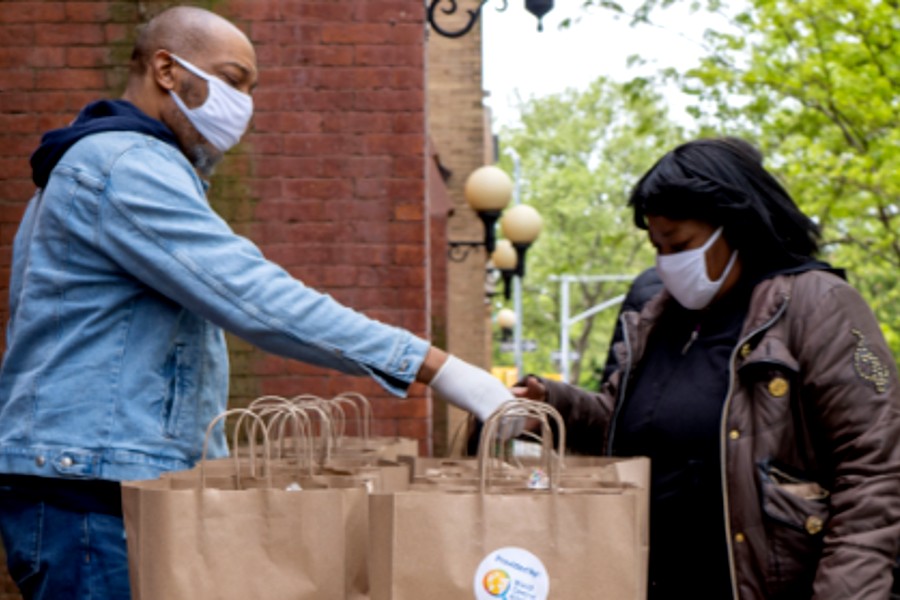 The Health Department today released an Epi Data Brief entitled, “Cycling in New York City, 2007 to 2014.” The most recent data for NYC adults and high school students show more New Yorkers are riding bicycles. This increase is seen across both sexes, racial and ethnic groups, as well as in wealthy and very high poverty neighborhoods. These findings are important because New Yorkers get more of their physical activity through active transportation such as walking and cycling than from other recreational activities, and people who are physically active are more likely to live longer, healthier lives.
The Health Department today released an Epi Data Brief entitled, “Cycling in New York City, 2007 to 2014.” The most recent data for NYC adults and high school students show more New Yorkers are riding bicycles. This increase is seen across both sexes, racial and ethnic groups, as well as in wealthy and very high poverty neighborhoods. These findings are important because New Yorkers get more of their physical activity through active transportation such as walking and cycling than from other recreational activities, and people who are physically active are more likely to live longer, healthier lives.
The complete Epi Data Brief and data tables can be found here.
“Cycling is not only a great mode of transportation in New York City, it’s also a way to increase physical activity and lower the risk of high blood pressure, diabetes and other chronic diseases,” said Health Commissioner Dr. Mary T. Bassett. “This is true for everyone, whether you live in a wealthy or a high-poverty neighborhood. This report shows that not only are more and more New Yorkers cycling, but that the increases are widespread. We will continue our work with DOT and community partners to promote safe active transportation across the five boroughs.”
“As a mode of transportation that is safe, affordable, fun and great for your health, the Health Department’s findings on the growth of cycling throughout New York City is great news,” said Department of Transportation Commissioner Polly Trottenberg. “As part of DOT’s recently-released strategic plan for a safe, green, smart, and equitable transportation future, we set a goal of doubling cycling levels Citywide in the next five years. We look forward to continuing to work with DOHMH, community boards and community groups to reach that goal, including by expanding critical cycling infrastructure – including protected bike lanes and expanded bike share – that will get us there.”
Epi Data Brief Highlights
- From 2007 to 2014, there was an increasing trend in the prevalence of NYC adults who cycled at least once a month (12 percent to 16 percent).
- The prevalence of students who cycled at least once a month also increased to 25 percent in 2013, up from 17 percent in 2009.
- Prevalence of cycling increased across four of the five boroughs for adults and across all five boroughs for high school students.
- The prevalence of adult residents cycling once a month or more increased across all levels of neighborhood poverty (low poverty: 14 percent to 20 percent; medium: 12 percent to 16 percent; high: 12 percent to 15 percent; and very high poverty: 10 percent to 13 percent) from 2007 to 2014.
- From 2007 to 2014, the prevalence of cycling once a month or more increased among White adults (13 percent to 19 percent), Black adults (10 percent to 13 percent) and Latino adults (13 percent to 17 percent) adults.
- Cycling once a month or more increased from 24 percent in 2009 to 36 percent in 2013 among male students of public high schools and from 11 percent to 14 percent among female students.
“This report shows that cycling rates have more than doubled in the Bedford-Stuyvesant, Crown Heights area of Central Brooklyn” said Dr. Torian Easterling, Assistant Commissioner of the Health Department’s Brooklyn Neighborhood Health Action Center. “This increase is the result of many partnerships. Over the years we have worked with NYC DOT and other city agencies, community-based organizations, faith-based organizations, schools, health care providers and residents to increase the opportunities for biking and walking in North and Central Brooklyn. NYC neighborhoods with high poverty face a high burden of chronic diseases – opportunities for physical activity are needed to help improve community health.”
…Bike New York taught bike skills to more than 17,000 New Yorkers last year alone; we’ve found that our students come from all walks of life, thanks in part to our collaboration with the Center for Health Equity, with many of them in underserved communities (like Harlem)…
“Bicycling produces remarkable physical, emotional and psychological health benefits, and provides cyclists with an affordable, practical, and efficient means of transportation and a healthy workout, while at the same time instilling confidence, responsibility and a feeling of independence,” said Ken Podziba, President and CEO of Bike New York. “Through our public, after school, and summer camp programs, Bike New York taught bike skills to more than 17,000 New Yorkers last year alone; we’ve found that our students come from all walks of life, thanks in part to our collaboration with the Center for Health Equity, with many of them in underserved communities throughout all five boroughs.”
This Epi Data Brief is based on questions from the Community Health Survey (CHS) and the NYC Youth Risk Behavior Survey (YRBS). The CHS is conducted annually by the Health Department with approximately 9,000 non-institutionalized adults ages 18 and older. The NYC YRBS is a biennial self-administered, anonymous health survey of students in public high schools (including charter schools, but not parochial schools) in New York City conducted by the Health Department and the NYC Department of Education.
“This is what progress looks like: we’re making New York a more bike-friendly city, and more New Yorkers are choosing to bike,” said Manhattan Borough President Gale A. Brewer. “We must continue to erase disparities by expanding bike lanes and other infrastructure in neighborhoods that need it, and finding more ways to make biking an easier, safer, and even more practical option for those who want to take advantage of it.”
About the Health Department’s Neighborhood Health Action Centers and the Center for Health Equity
The Neighborhood Health Action Centers, formerly the District Public Health Offices (DPHOs), of the Health Department have been working to increase opportunities for physical activity, including cycling in neighborhoods with high poverty in East and Central Harlem, North and Central Brooklyn and the South Bronx. The Action Centers use innovative, place-based approaches including partnerships with schools, community-based organizations, and the healthcare system to increase opportunities for neighborhood residents to participate in ride clubs, the creation of community biking and walking routes, and Open Streets events.
Founded in 2014, the Health Department’s Center for Health Equity amplifies the agency’s work to eliminate health disparities and improve health outcomes in neighborhoods with disproportionately high rates of chronic disease and premature death. The division takes a number of approaches to invest in key neighborhoods, eliminate the social barriers to good health and advance health equity throughout New York City. The Neighborhood Health Action Centers, opening soon, will better link residents with local primary care and community services. The Action Centers will also provide space for community-based organizations and Health Department staff to work together to advance neighborhood health. For more information on the Center for Health Equity, visit http://www1.nyc.gov/site/doh/health/neighborhood-health/center-for-health-equity.page.
Follow the Center for Health Equity on social media using #NYCHealthEquity.
Become a Harlem Insider!
By submitting this form, you are consenting to receive marketing emails from: Harlem World Magazine, 2521 1/2 west 42nd street, Los Angeles, CA, 90008, https://www.harlemworldmagazine.com. You can revoke your consent to receive emails at any time by using the SafeUnsubscribe® link, found at the bottom of every email. Emails are serviced by Constant Contact








